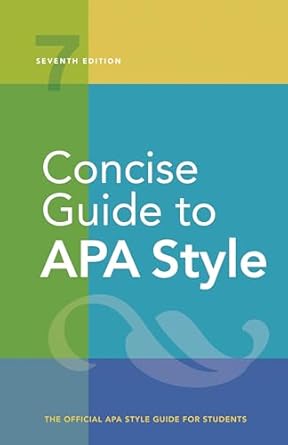[toc]
square brackets a guide for academic writing
Concise Guide to APA Style: 7th Edition (OFFICIAL)
Page 114 Review
Understanding Square Brackets in Academic Writing: A Comprehensive Guide
This excerpt provides a detailed guide on the correct usage of square brackets in academic writing, primarily focusing on the conventions used in scientific and scholarly publications.
Let’s delve deeper into these rules, supported by the provided text.
When to Use Square Brackets
The excerpt clearly outlines several instances where square brackets are essential:
1.
Enclosing Parenthetical Material Within Parentheses
When you need to add extra information within an already existing set of parentheses, square brackets come to the rescue.
The excerpt illustrates this with a concise example:
“(The results for the control group [n = 8] are also presented in Figure 2.)”
Here, the square brackets elegantly enclose the sample size `[n = 8]` without disrupting the flow of the primary parenthetical statement.
2.
Abbreviating Terms in Parentheses
When an abbreviated term is introduced within parentheses, it should be enclosed in square brackets.
This practice helps readers quickly understand the full term and its abbreviation.
“(Minnesota Multiphasic Personality Inventory—2 [MMPI-2]; Butcher et al., 2001)”
This example clearly shows how `[MMPI-2]` clarifies the abbreviation for ‘Minnesota Multiphasic Personality Inventory—2’.
3.
Indicating Confidence Interval Limits
In statistical reporting, square brackets are used to denote the lower and upper bounds of a confidence interval.
“95% Cls [-7.2, 4.3], [9.2, 12.4], and [-1.2, -0.5]”
This is a standard way to present confidence intervals, making it easy for readers to interpret the range of plausible values.
4.
Adding Editorial Clarifications in Quotations
One of the most crucial uses of square brackets is to insert clarifications or context into quoted material without altering the original author’s words.
As the text says:
“to enclose material inserted in a quotation by someone other than the original author (see also Section 8.31)”
“Schofield et al. (2016) found that “these types of [warm and accepting] parenting behaviors are positively associated with healthy child and adolescent adjustment” (p. 615).”
Here, the phrase `[warm and accepting]` might have been implied but not explicitly stated in the original quote.
The square brackets indicate that this clarification was added by the current author, not Schofield et al.
5.
Describing the Form of a Work in a Reference List
For entries in a reference list that are not typical peer-reviewed academic literature, square brackets can be used to provide a brief description of the work’s format (e.g., a film, a blog post, etc.).
The excerpt mentions:
“to enclose a description of form for some works (e.g., those outside the typical peer-reviewed academic literature; see Section 9.21) in a reference list entry”
When NOT to Use Square Brackets
The excerpt also highlights situations where square brackets are inappropriate:
1.
Setting Off Statistics That Already Include Parentheses
Do not use square brackets around statistical notations that already use parentheses.
Correct: in the first study, F(1, 32) = 4.37, p = .045.
Incorrect: in the first study (F[1, 32] = 4.37, p = .045).
Incorrect: in the first study [F(1, 32) = 4.37, p = .045].
The correct format ensures clarity and avoids unnecessary clutter.
2.
Enclosing the Year in a Narrative Citation Within Parentheses
When a narrative citation appears within parentheses, use commas to separate the author’s name and year, not square brackets.
Correct: (as Gregory, 2020, concluded . . . )
Incorrect: (as Gregory [2020] concluded . . . )
Conclusion
Mastering the use of square brackets is crucial for producing clear, accurate, and professional academic writing.
The excerpt provides a valuable guide to these conventions, helping writers avoid common errors and maintain consistency in their work.
By adhering to these guidelines, researchers and scholars can ensure that their writing meets the highest standards of clarity and precision.
Buy full ebook for only $18: https://www.lulu.com/shop/american-psychological-association/concise-guide-to-apa-style-7th-edition-official/ebook/product-rmzpq54.html?page=1&pageSize=4
Square Brackets A Guide For Academic Writing
Read more: Bias-Free Language: Race and Ethnicity Guide


Leave a Reply